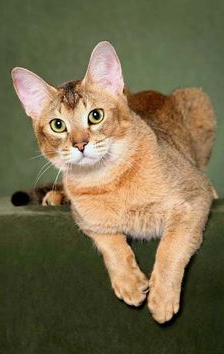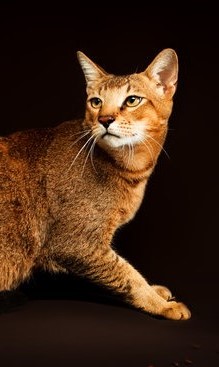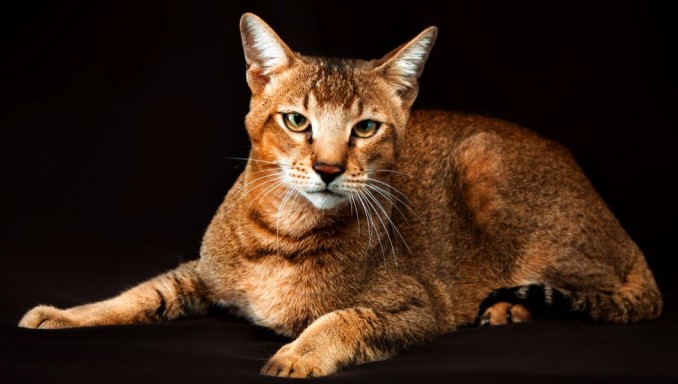Chausie
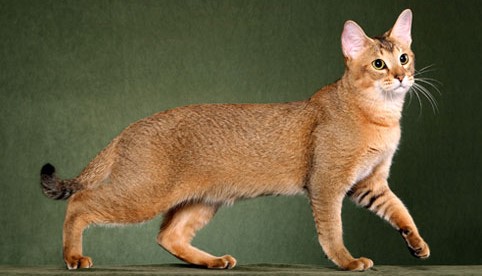
Like other breeds, Chausie likes routines. They like to be fed at the same time of day. But they won’t appreciate rearranging furniture around the house because it often causes the cats stress. With that said, huskies are fairly calm by nature. Cats are also energetic and like to keep busy when they are not napping. They thrive in human company and don’t like to be left alone for any length of time.
Table of Contents
Breed Information
| Origin | Egypt |
| Size | Up to 40 cm |
| Weight | Males 7-12 kg Females 7-9 kg |
| Fur Type | Short-haired |
| Color | Tiked tabby, black or gray |
| Lifestyle | Outdoors, indoors |
| Lifespan | 12-14 years |
| FIFe Classification | – |
| WCF Classification | – |
| TICA Classification | CU |
| Group | Short-haired cats, rare cats |
| Price | $1000-20000 |
Breed Photos
Origin History
Chausie was first bred by crossing a wild cat with a domestic cat. The breeders’ ultimate goal was to create a kind, affectionate, domestic cat that could boast a jungle cat’s traits and physical characteristics. The breeders succeeded in breeding large, beautiful cats with a kind and calm character, and since this breed first appeared, breeders in other countries around the world have begun to produce healthy specimens of Chausie.
Cats are native to the Nile Valley but are also found in other parts of the world, including South Asia. Ancient Egyptians revered these cats and the mummified remains of jungle cats.
Jungle cats are thought to mate frequently with domestic cats, and for centuries hybrid cats have been registered in many countries around the world, including North America, Southeast Asia, and India, but it was not until the nineties that European breeders began a breeding program. TICA granted full championship status to this breed in 2015.
Appearance
Chausie was bred to retain the physical characteristics of the wild cat. They are medium to large, with long legs and body. Their heads are wedge-shaped. This breed has long muzzles, which give balance to the cheekbones.
Chausie eyes are small to medium-sized, with the lower half oval and tilted toward the ears’ outer base. The upper half of the eye is flatter but still has an excellent semi-oval shape. The color of the eyes can be gold or yellow; some cats have light green or brown eyes. When viewed in profile, Chausies have a sloping forehead, and their noses rise to the tip, forming a small tubercle. They have large, standing, high ears positioned at a slight angle at the top of the cat’s head. Their ears are quite wide from base to tip, and Chausie also has tufts at the tips of their ears, although some cats do not.
Cats of this breed have long, slender bodies and deep breasts. Their legs are long, with a moderate amount of bone, and their feet are medium-sized and oval-shaped. The tails are fairly short and moderately wide, tapering slightly toward the tip.
When it comes to fur, huskies boast short to medium-length coats. Their fur is dense, with a soft undercoat and a slightly stiffer top coat. Cats with black coats often have softer to the touch, while cats with black, gray coats often have coarser coats. Chausies come in a variety of colors.
Character
Like other breeds, Chausie likes routines. They like to be fed at the same time of day. But they won’t appreciate rearranging furniture around the house because it often causes the cats stress. With that said, huskies are fairly calm by nature. Cats are also energetic and like to keep busy when they are not napping. They thrive in human company and don’t like to be left alone for any length of time. Thus, these active, intelligent cats are best suited for families where at least one person stays home when everyone else is out of the house.
They are known as good-natured and affectionate cats who love to socialize with their owners and especially love to play games. They form extremely strong bonds with their owners and can be taught to wear a harness and walk on a leash, just like their canine counterparts.
Care
Chausies boast short, tightly fitting coats and therefore require little grooming. Weekly brushing and wiping with suede is all it takes to keep their coat in good condition with a nice sheen. Like other breeds, they tend to shed the most in the spring and then again in the fall, when more frequent brushing is usually required.
It is also important to check the cat’s ears regularly and clean them if necessary. If too much discharge accumulates, it can lead to a painful infection that is difficult to treat. Prevention is often easier than treating ear infections. Cats often suffer from ear mites, so it is so important to check their ears about every week.
Education
Chausies are energetic, playful, intelligent cats who like to be given lots of stimulation to keep them happy. Cats kept as pets should be given plenty of activities and places to hide when they want to, given that Chausie likes to climb high up so they can see the world below from a high vantage point. They should also have plenty of places where they can nap.
Common Diseases
The Chausie is a healthy breed that does not suffer from hereditary or congenital disorders that many other breeds are predisposed to. However, the breed is still in its infancy and needs more time to gather information about health problems affecting Chausie cats.
Nutrition
If you get a Chausie kitten from a breeder, he will provide you with a feeding schedule. It is important to stick to the same schedule to avoid any upset stomach. You can change the kitten’s diet, but this must be done very gradually, always making sure that he does not develop any digestive disorders.
Older cats are not known to be fussy about food, but that does not mean they can be given lower quality food. It is best to feed a mature cat several times a day. It is also worth making sure that you are giving good quality food that meets all of their nutritional needs, which is especially important as the cat gets older. It’s also important to keep an eye on the cat’s weight because if they start to gain weight, it can seriously affect their overall health and well-being. Like all other breeds, huskies need constant access to fresh, clean water.
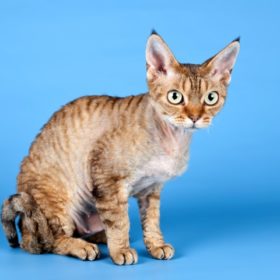 Devon Rex
Devon Rex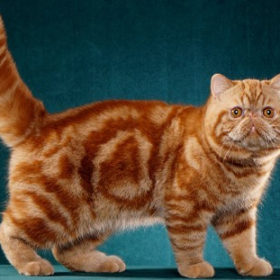 Exotic Shorthair
Exotic Shorthair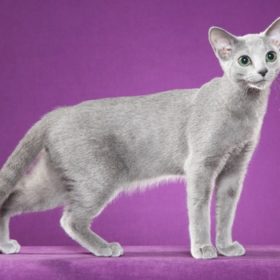 Russian Blue
Russian Blue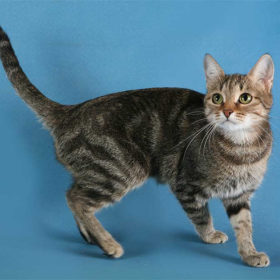 Brazilian Shorthair
Brazilian Shorthair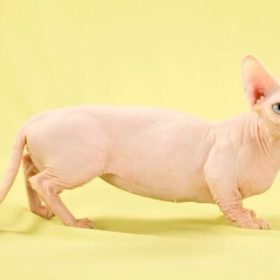 Minskin
Minskin Thai
Thai